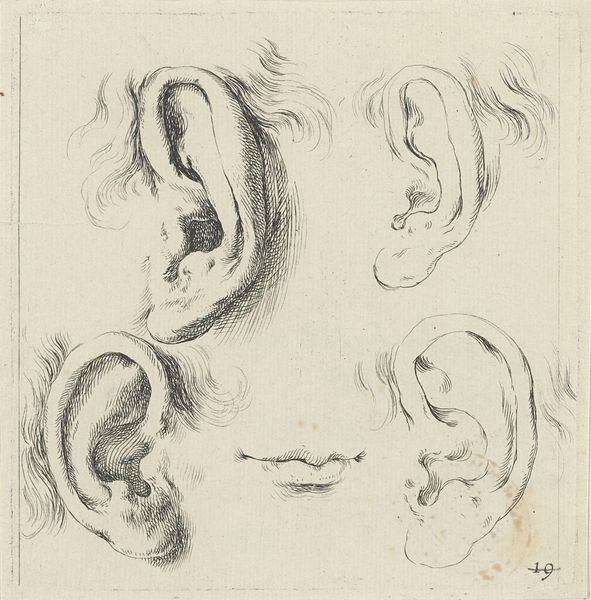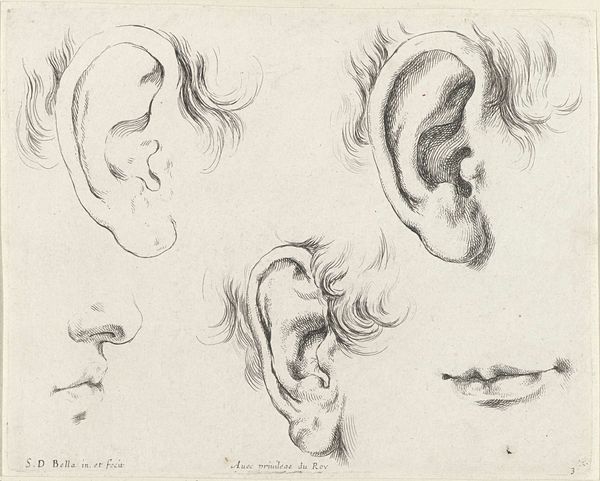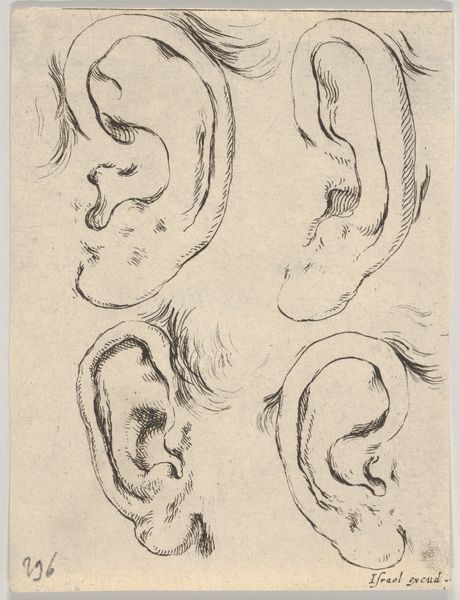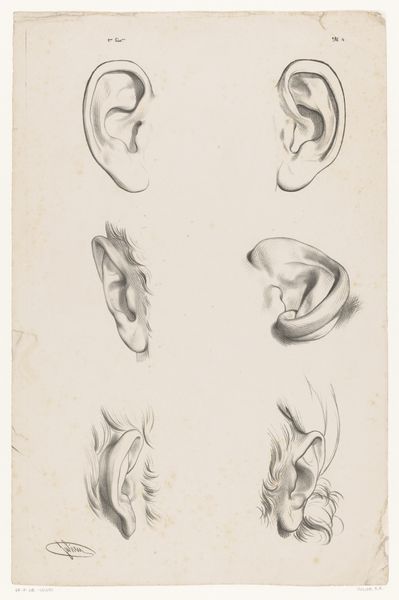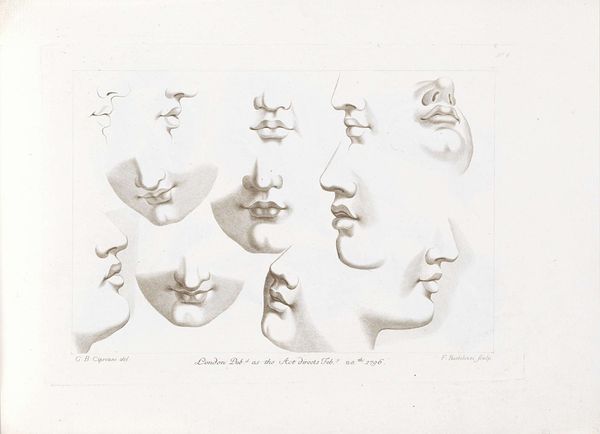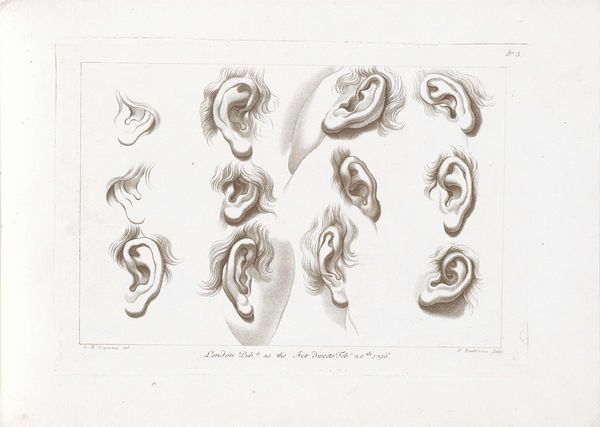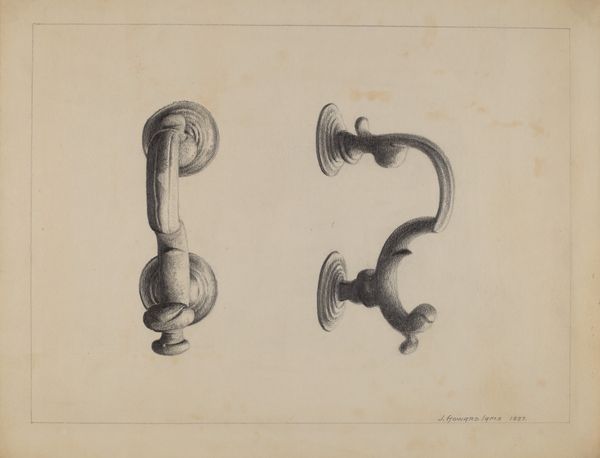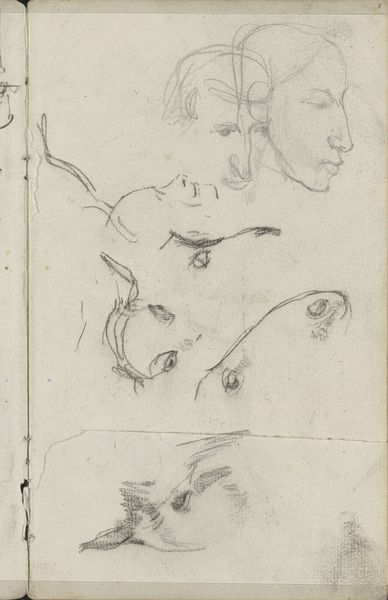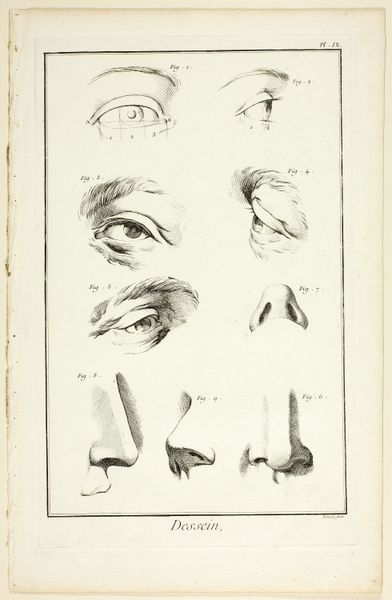
drawing, ink
#
portrait
#
drawing
#
ink drawing
#
baroque
#
ink
#
academic-art
Dimensions: height 142 mm, width 215 mm
Copyright: Rijks Museum: Open Domain
Editor: Here we have "Studies of Ears" by Jusepe de Ribera, an ink drawing estimated to be made sometime between 1622 and 1640. It's definitely a different sort of artwork. It seems more like an anatomy sketch than a finished drawing. What is your take on it? Curator: I see an artist deeply engaged with the formal properties of representation. Observe the rigorous lines. They do not merely delineate the ear, but define form through shadow and light. The repetitive nature allows Ribera to thoroughly explore subtle variations of shape and texture. Note how the composition draws our eye in a rhythmic pattern, almost a visual melody. Editor: A visual melody... Interesting. So you don't see this as just a preparatory sketch for, say, a larger painting? Curator: Whether it served as preparatory work is immaterial. What commands attention is Ribera's precise understanding and articulation of form through line and tone. Semiotically, we could argue each ear presents a slightly different signifier, collectively pointing towards an exhaustive, almost scientific observation of the human anatomy. Editor: Scientific observation as art... So, it's less about the 'ear' itself and more about how it's rendered, how the medium creates the image. Curator: Precisely! And it's through that rendering, through the controlled application of ink, that Ribera transcends mere representation and achieves a formal elegance. It’s an eloquent discourse on line, form, and the act of seeing. Editor: I'm starting to see the beauty in that formal elegance. I originally viewed it as simply a means to an end, now it’s starting to make a statement through art and process itself. Curator: Indeed! It's not simply seeing; it's truly observing the inherent form and using it to translate into his visual language.
Comments
No comments
Be the first to comment and join the conversation on the ultimate creative platform.

